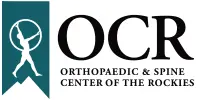 –update from Dr. Timothy Pater
–update from Dr. Timothy Pater
Recently, I was fortunate enough to attend a two day symposium in Chicago titled, “Comprehensive Care of the Hand and Upper Extremity in the Highly Competitive Athlete.” The American Society for Surgery of the Hand presented the symposium. It brought together many of the leading Hand Specialists in the country who are consultants for professional and high level collegiate athletes.
Many of the common hand and wrist injuries that are experienced by athletes during sport are the same injuries that occur as a result of daily life unrelated to sporting activity. However, the goals of the athlete with regard to speedy recovery, early return to play and long-term prognosis are often unique.
Care of the high level athlete often involves a complex team of professionals to create a care plan; including the Team Doctor, Hand Specialist, Team Trainer, Hand and Physical Therapist, Strength and Conditioning Coach, Head Coach and even Agents. At the symposium, we heard unique perspectives from such individuals as the Head Trainer and Hand Surgeon of the Chicago Bears, Hand Surgeons that treat the New York Yankees, Mets and Knicks and a prominent professional agent who represents over 50 NBA players.

In my practice, it is not a daily occurrence that I discuss a patient with a player agent or the General Manager of the New York Yankees. However, Colorado’s Front Range is filled with high-level recreational athletes who have the very same concerns and aspirations about early successful return to activity. It is an everyday occurrence in my clinic to see snowboarders, road cyclists, mountain bikers, tennis players, golfers and high school athletes of all kinds that are anxious to get past their injuries. Cyclists with collarbone fractures and mountain bikers with wrist fractures, for instance, are commonly fixed with surgery in an attempt to obtain the best overall outcome and provide an opportunity for early rehabilitation.
High School athletes have concerns about return to play as it relates to scholarship opportunities or perhaps just being able to finish out their senior season.
For example, an athlete with a significant thumb ligament injury that requires surgery may choose to safely play out the season in a splint and delay surgery until the season end. A football linebacker may be able to play immediately with a cast on their hand but a quarterback may not. These are examples of the importance of listening to the unique needs and goals of each patient and applying intelligent and creative techniques to provide the best care possible.

This course offered a rare and extremely valuable opportunity to listen to discussion and
debate among the leaders in this field and learn tricks of the trade that allow physicians to get their athletes back to sport quickly and safely. Accelerated rehabilitation programs, creative splinting, and aggressive surgical approaches to repairing fractures were just a few of the topics we discussed. In this profession it is often said that if you are standing still you are actually going backward. It is in this spirit that I return from Symposia enthusiastic to employ new techniques, innovate and provide the best care for patients into the future
.
